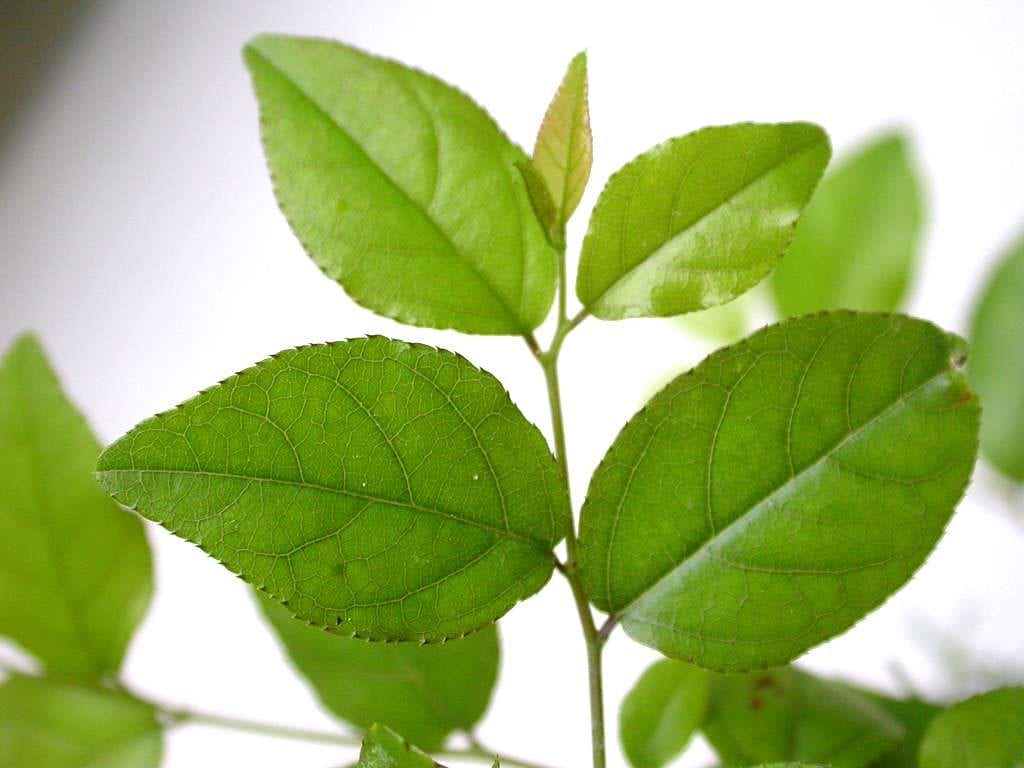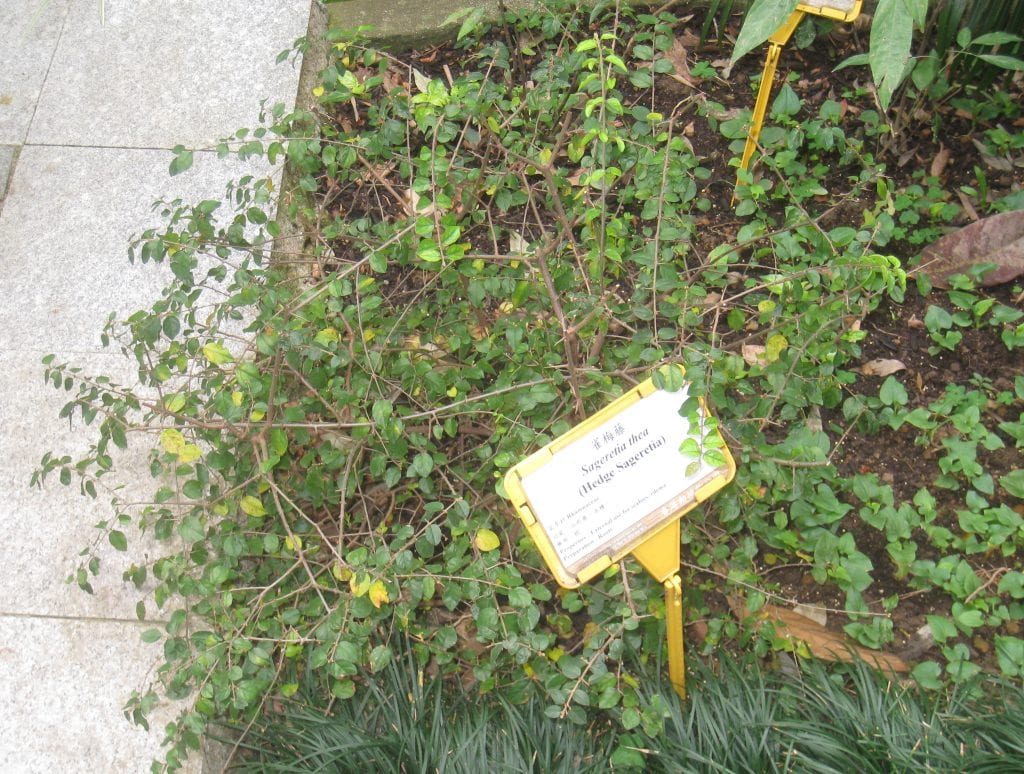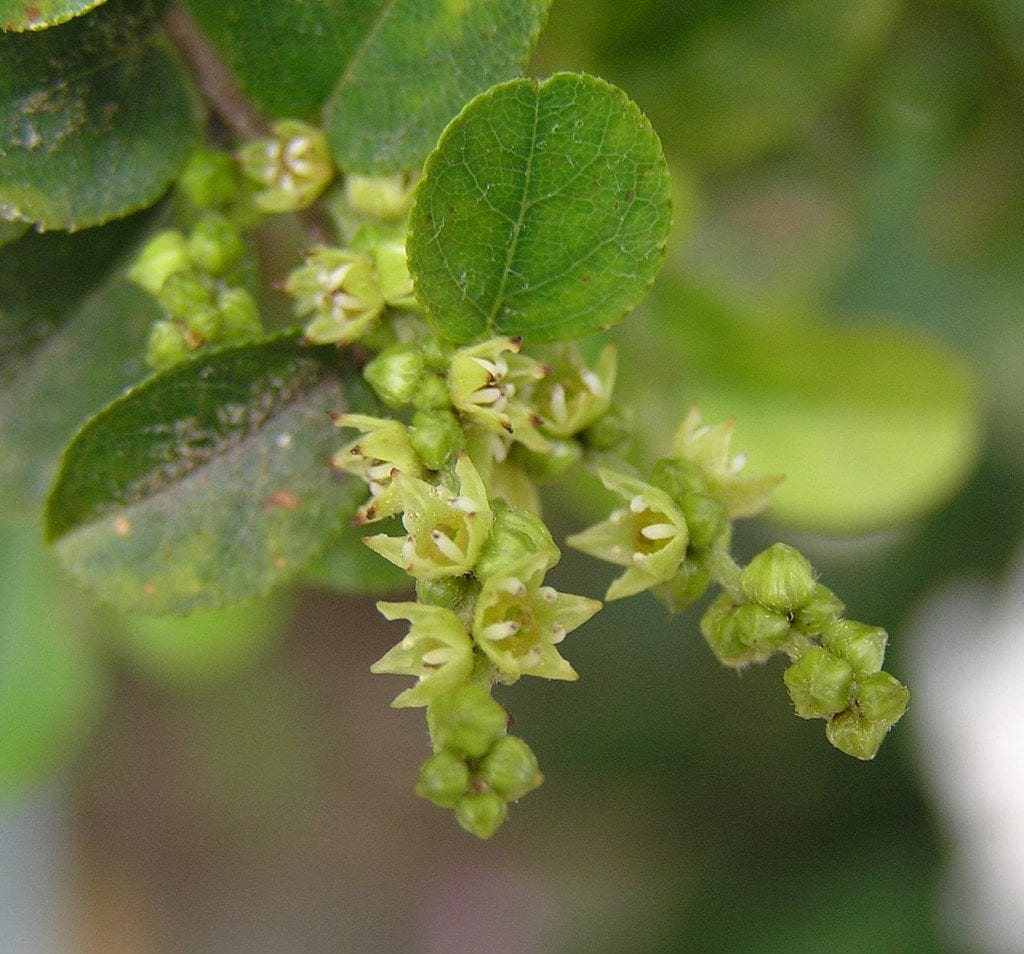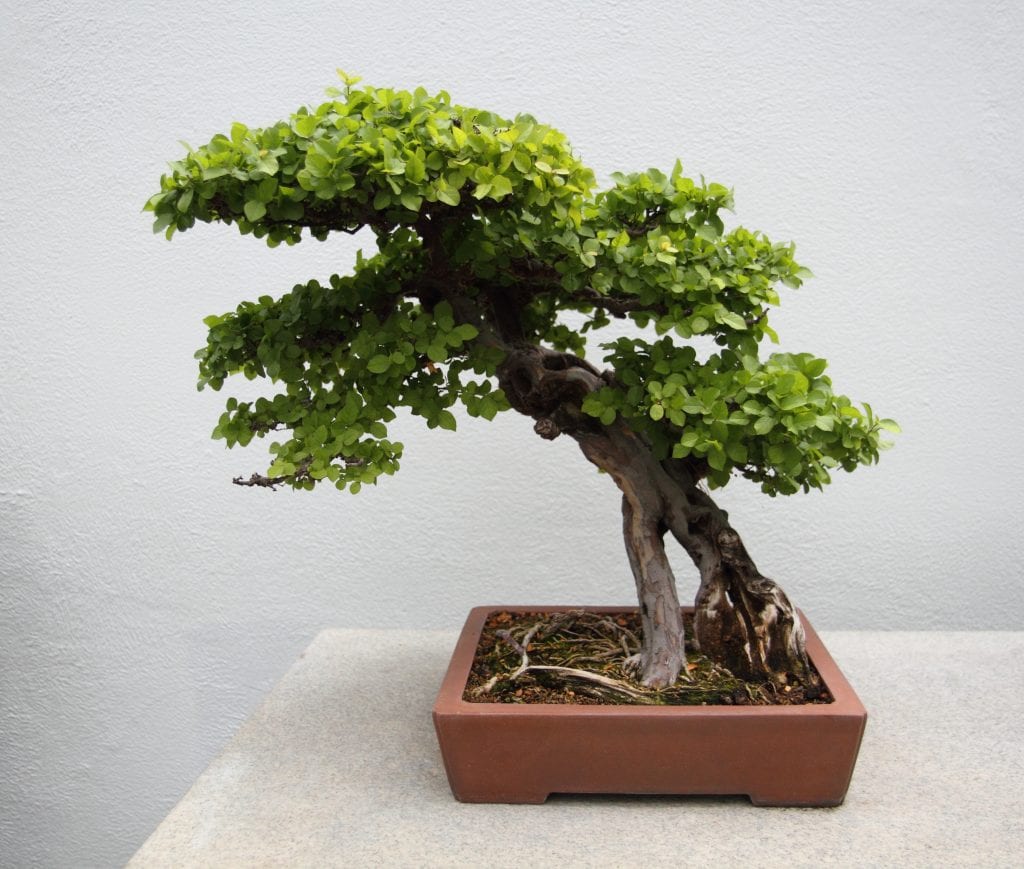
Image - Wikimedia / Abrahami
La Sageretia theezans o It is a very popular species among bonsai fans, but the truth is that it is also a great garden plant. Its height is rather low, but even so it is one thing that you can easily control by pruning since it tolerates them quite well.
For that, and for what I'm going to tell you, its maintenance is easy, suitable for beginners.
Origin and characteristics of Sageretia theezans

Known as sageretia, Chinese sweet plum or sweet plum, is an evergreen shrub endemic to southern China that reaches a height of 1 to 3 meters. Its trunk is woody, more or less straight, and from it branches arise from which leaves sprout 1,5 to 4cm long, green and with slightly serrated margins.
During the spring it blooms, producing flowers grouped in more or less hanging yellow inflorescences. The fruit is a drupe barely one centimeter in diameter that can be eaten without problems.
What are their cares?
If you want to have a copy, we recommend you take care of it as follows:
Location
It is a plant that has to be put outside, in semi-shade or in full sun. As it is small, it does not matter if it is close to the house because it is impossible that its roots can do damage.
Earth
It depends on where you are going to have it:
- Flower pot: use substrate for acidic plants (for sale here).
- Garden: grows in soils rich in organic matter, well drained and with a slightly acidic pH, from 4 to 6.5.
Irrigation

Image - Flickr / 阿 橋 HQ
The frequency of irrigation will change throughout the year, being higher during the summer than in the rest of the seasons. The reason is that during the summer season the land dries much faster, so that is when we have to be very aware of irrigation.
But beware: you have to water without going overboard. It is easier to recover a dry plant than another that has suffered from excess water. So do not hesitate to check the humidity of the soil before moistening it again, for example with a thin wooden stick: if it comes out practically clean when you extract it, you can water.
Anyway, to give you an idea, It should be watered an average of 3-4 times a week during the hottest season, and 1-2 times a week the rest of the year.
Subscriber
From early spring to late summer must be paid with a specific fertilizer for acidophilic plants (for sale here) following the indications specified on the product packaging.
Multiplication
La Sageretia theezans multiplies by seeds in spring, following this step by step:
- First, put them in a glass of water for 30 minutes, so you can know which will be viable (those that sink) and which ones will not.
- Then, fill a seedling tray (for sale here) with substrate for acidic plants.
- Then water conscientiously.
- Next, place a maximum of two seeds in each socket and cover them with a thin layer of substrate.
- The next step is to sprinkle a little sulfur to prevent fungus.
- Finally, place the seedbed outside, in semi-shade, and keep the substrate moist.
If all goes well, they will germinate throughout the spring.
Pruning
At the end of winter, cut off the dry, diseased branches and those that are weak, and take advantage if you want to give it some shape (ball for example).
Use scissors previously disinfected with pharmacy alcohol.
Planting or transplanting time
You can plant it in the garden in spring, when the minimum temperature is at least 15ºC.
If you have it in a pot, transplant it every 2 or 3 years, when you see that the roots come out of the drainage holes.
Rusticity
It does not resist frost.
What uses is it given?
The Chinese sweet plum is a plant that used as an ornamental, to decorate gardens, patios, terraces or even balconies. It is the typical plant that you can give some form of ball or miniature tree.
And speaking of thumbnails ...
How do you care for bonsai Sagerethia theezans?

Image - Wikimedia / Cephas
It is very normal to fall in love with those little leaves, and with that style that bonsai projects of this species usually have that they sell both in nurseries and garden stores. But what do you do to keep it that beautiful?
- Location:
- Exterior: in semi-shade, but it is important that the sun shines directly more than 1 hour / day.
- Indoor: place in a bright room, near the window. Go turning it around every fortnight so that it has a regular growth.
- Substratum: mix 70% of akadama with 30% kiryuzuna.
- Irrigation: use rainwater or lime-free. If it is indoors, put glasses of water around it so that the humidity is high.
- Subscriber: pay once a month in spring and summer with a specific fertilizer for bonsai (on sale here).
- Pruning: just cut those that look bad, and trim those that are growing too much at the end of winter.
- Transplant: every 2-3 years, in spring.
- Pests: can be affected by mealybugs and aphids, which are fought with diatomaceous earth or with potassium soap.
Where to buy?
It is easy to find in nurseries, but if you have problems you can buy it from here:
What did you think of Sagerethia theezans?
